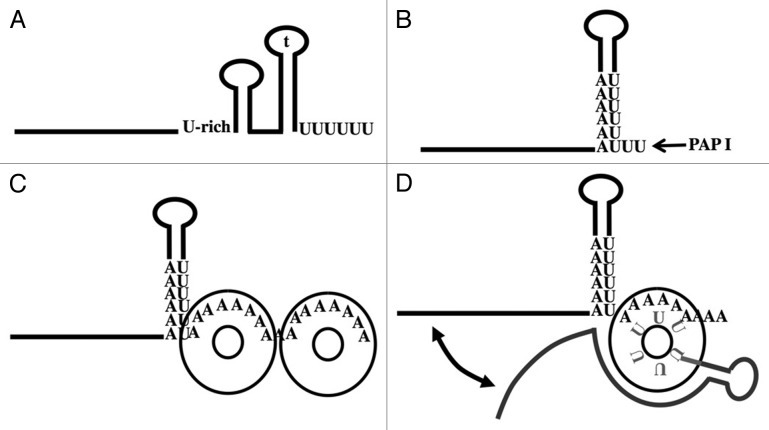Figure 1. Structural features and potential interactions at the 3′ end of adenylated RNAs terminated by Rho-independent terminators. (A) The four structural elements involved in Hfq binding87 are described in the text. (B) RNAs that are polyadenylated by PAP I contain an oligo(A) or an A-rich sequence located upstream of the hairpin of the terminator which can hybridize with the 3′ terminal single standed U-stretch recognized by Hfq. (C) Processive elongation of oligo(A) tails in the presence of Hfq presumably generates stable oligo(A)-Hfq complexes. Several Hfq probably bind side by side on the oligo(A) tail. The number of As interacting with the distal RNA-binding surface of Hfq on the scheme is arbitrary. See the text for the description of this hypothetical complex. (D) The 3′ end of polyadenylated RNA can in principle also bind an Hfq-sRNA complex. The terminal U-stretch of the sRNA and the oligo(A) tail can bind simultaneously to the proximal and the distal-binding surfaces located on the opposite faces of the hexamer. The U-stretch hidden by the protein is in light gray. The sRNA shown in dark gray also interacts with the lateral surface of Hfq. There are indications that a sRNA and a mRNA can compete for binding at the same site.114 We propose in the text that such complexes may favor the interaction of the sRNA with potential target sites located in 3′ UTR close to the terminator.

An official website of the United States government
Here's how you know
Official websites use .gov
A
.gov website belongs to an official
government organization in the United States.
Secure .gov websites use HTTPS
A lock (
) or https:// means you've safely
connected to the .gov website. Share sensitive
information only on official, secure websites.
